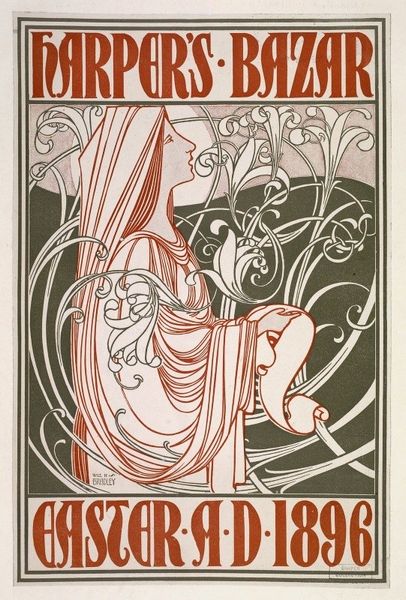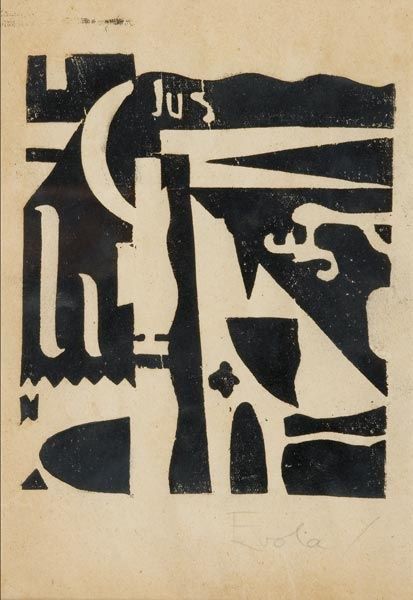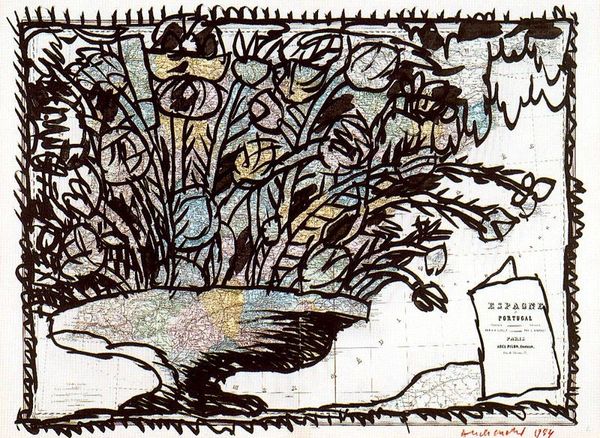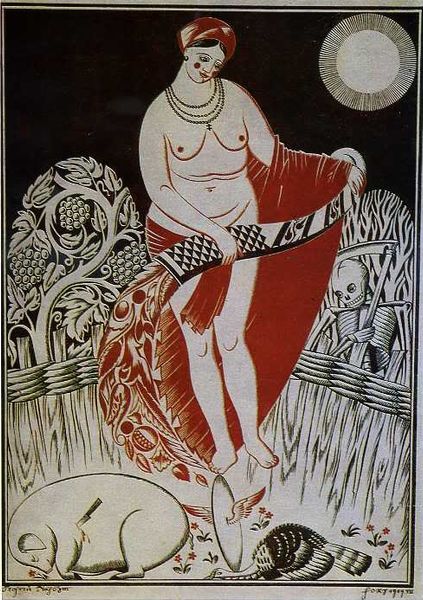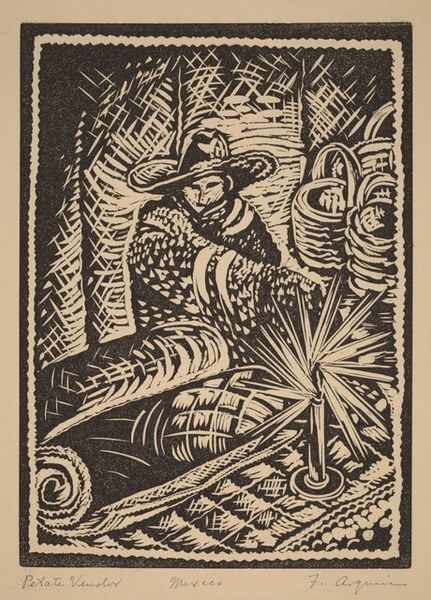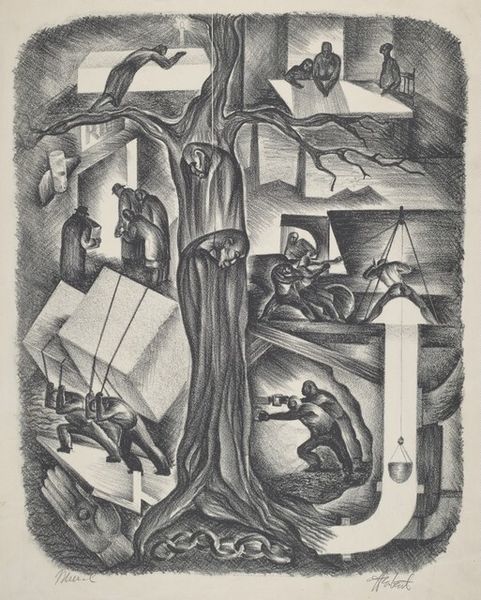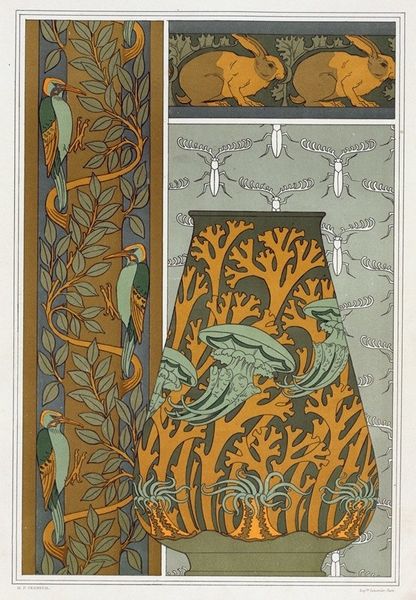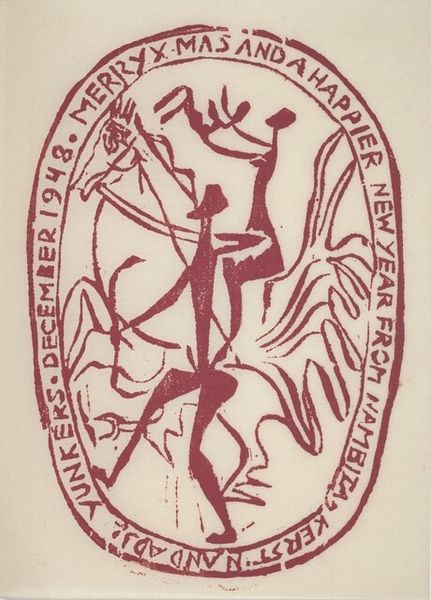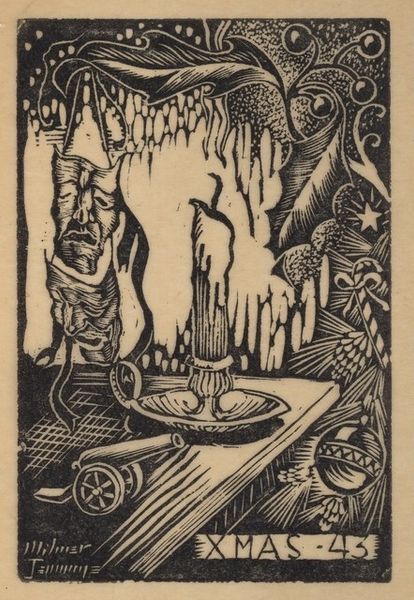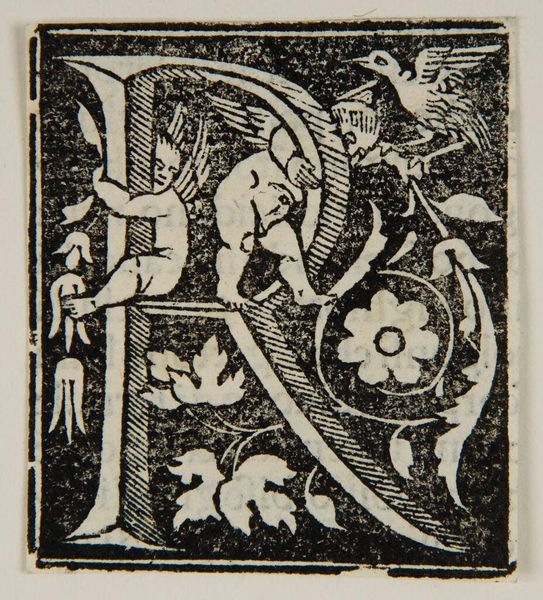
graphic-art, print, linocut
#
graphic-art
#
art-nouveau
#
ink painting
#
linocut
# print
#
linocut
#
linocut print
#
geometric
#
symbolism
Copyright: Public domain
Curator: This striking graphic art piece before us is the cover of the magazine "Art," created by Heorhiy Narbut in 1919. It is a linocut print, showcasing elements of both Art Nouveau and Symbolism. Editor: The dynamism is palpable, even arresting. It makes me wonder about the state of Ukrainian graphic arts, and print production, right after the first World War. What can we discern about its process? The striking lines appear cut with intent. Curator: Indeed, considering the historical context—the aftermath of World War I and the Ukrainian struggle for independence—the symbolism here is profound. We see a winged horse, a Pegasus-like creature, soaring above a seated musician, with geometric and floral patterns composing a rich, textured background. Narbut masterfully uses traditional Ukrainian motifs and integrates them into a modern artistic language. Editor: From a material perspective, the linocut medium speaks volumes. It’s a relatively accessible technique, suggestive of a democratic impulse to art production, given the historical turmoil you mention. I am very curious how he chose this medium, considering his wider artistic background. Curator: Narbut, of course, was interested in the revival of Ukrainian identity. Linocut prints like these helped make artistic expression affordable. This particular image becomes, perhaps, an expression of national cultural aspirations during a tumultuous time of political and social upheaval. It underscores how cultural identity gets created, distributed, and circulated within the public consciousness. Editor: Absolutely. The black ink is used very precisely; I find it compelling to think about the tools that produced it. Did he use specialized knives, or experiment with locally sourced equipment? Did Narbut, in his approach to materials and print, consider the ways his methods reflected the society it was part of? I imagine distribution channels for artworks, prints, political propaganda—how did that impact linocut choices, artist choices, the economics? Curator: Reflecting on it, this cover is not simply a decorative piece, it serves as a vital assertion of cultural presence and self-determination during a crucial period in Ukrainian history. Editor: Thinking of the work and materials together deepens my appreciation for its enduring resonance, highlighting the value of production as integral to interpreting cultural impact.
Comments
No comments
Be the first to comment and join the conversation on the ultimate creative platform.

